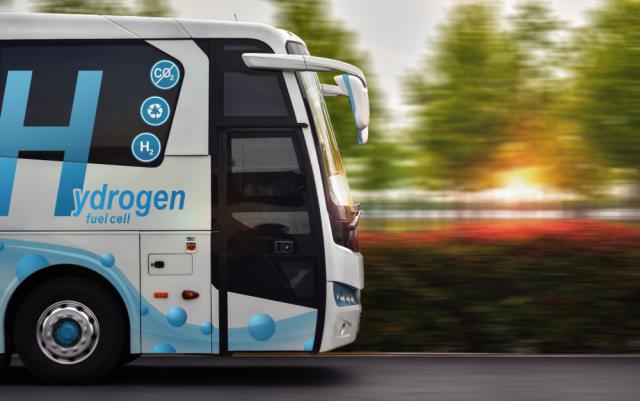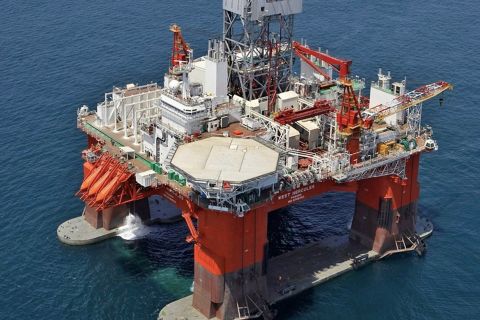
Speakers at the recently held Hydrogen North America conference in Houston said meeting the high expectations for clean hydrogen’s potential has included teaming up with companies on paths that wouldn’t normally cross. (Source: Shutterstock.com)
HOUSTON—As momentum grows for clean hydrogen, energy executives looking to build a hydrogen economy and reach net-zero goals agree that partnerships and collaboration will be needed.
“It’s going to take partnerships and thinking about partnerships in a different way,” Bill Newsom, president and CEO of Mitsubishi Power Americas, said last week during the Hydrogen North America conference. “Not just staying in your silos, but putting your egos and your preconceived notions aside and looking at a new ecosystem of partnerships. … This unprecedented collaboration is what’s going to get us to net zero by 2050.”
High expectations exist for clean hydrogen’s potential to decarbonize sectors where electrification isn’t the most viable option. There are challenges: infrastructure, storage and balancing supply and demand. However, matching needed skill sets through partnerships and collaboration could help advance hydrogen developments.
“This unprecedented collaboration is what’s going to get us to net zero by 2050.”—Bill Newsom, Mitsubishi Power Americas
For Mitsubishi, a power generation, energy storage and digital solutions specialist that will invest $12 billion over the next nine years in energy transition technologies, the hydrogen journey has included teaming up with companies on paths that wouldn’t normally cross.
One of these partners includes Magnum Development, an expert in underground geological formations and hydrogen storage in salt domes. The two are working together via the ACES Delta LLC joint venture (JV) to develop what could become one of the world’s largest industrial green hydrogen facilities.
Located in central Utah, the Advanced Clean Energy Storage project will convert renewable energy via a 220-MW electrolyzer bank to produce up to 100 metric tonnes of green hydrogen per day. The hub, which will use two 4.5 million-barrel salt caverns for storage, will also support Intermountain Power Agency’s IPP Renewed Project, an 840-MW power plant designed to initially use 30% hydrogen fuel—the rest natural gas—rising to 100% hydrogen by 2045.
“We’re about 70% done with the first cavern and the first brine pond,” Newsom said, noting the salt caverns are Phase 1. “Just seeing this thing come to fruition is really amazing and a demonstration of unprecedented collaboration.”
“If we work together, if we solve these problems together, not only will we move faster, we’ll have a more innovative solution, a more cost-effective solution.”—Michael Ducker, Mitsubishi Power Americas
Just like the shale revolution brought companies of all types to drive innovation, unlock complex plays and lower costs, the pursuit of hydrogen is bringing companies together. Collaboration is happening amongst peers and across industries as solutions are sought for challenges involving cost, scale, storage and infrastructure.
“If we work together, if we solve these problems together, not only will we move faster, we’ll have a more innovative solution, a more cost-effective solution,” said Michael Ducker, senior vice president of hydrogen infrastructure for Mitsubishi Power Americas.
Speaking on a panel at the conference alongside executives from Air Liquide and Green Hydrogen International Corp., Ducker explained that a company may give up a little bit more of the pie it normally would, but recognize “that pie is going to be a heck of a lot bigger, again get there a lot quicker and be more innovative if [we] work together. Collaboration really is key to our strategy and great to see that’s part of the strategy of many others out there, too.”
Working with Australia-based Energy Estate, a renewable energy developer, Green Hydrogen International Corp. aims to develop a hydrogen hub in South Texas.
“There will be collaboration on different levels of the [green hydrogen value] chain for sure. I think that’s a given.”—Brian Maxwell, Green Hydrogen International Corp.
Called Hydrogen City, Texas, the 60-GW project—which will be powered by solar and wind energy with salt dome storage—is targeting production of more than 2.5 billion kilograms of green hydrogen per year.
“It’s definitely a very long value chain,” said Brian Maxwell, CEO of Green Hydrogen International, pointing out the need for renewables, distribution, storage, electrolyzers and ammonia plants. “There will be collaboration on different levels of the chain for sure. I think that’s a given.”
“The collaboration part makes the lawyers nervous, but we have had conversations that we haven’t had as openly as maybe we have had before.”—Katie Ellet, Air Liquide
Hydrogen producer Air Liquide is also among the companies jointly pursuing more hydrogen developments. The company has forged JVs with Siemens Energy focused on production of industrial-scale renewable hydrogen electrolyzers in Europe and one with Grupe ADP to develop hydrogen infrastructure at airports among other partnerships.
“The collaboration part makes the lawyers nervous, but we have had conversations that we haven’t had as openly as maybe we have had before,” said Katie Ellet, president of hydrogen energy and mobility, North America, for Air Liquide.
She called it an opportunity that drives market efficiency.
“You start to say, ‘OK, we have to do this quickly. We need to lay this down fast. So, what are you good at? What am I good at? And how do we work together to move forward?” she said. “Looking at the big picture, this is about climate change. This is about reducing that carbon footprint. This is about leaving the world better for those who are behind us.”
Recommended Reading
CNOOC Sets Increased 2024-2026 Production Targets
2024-01-25 - CNOOC Ltd. plans on $17.5B capex in 2024, with 63% of that dedicated to project development.
Orange Basin Serves Up More Light Oil
2024-03-15 - Galp’s Mopane-2X exploration well offshore Namibia found a significant column of hydrocarbons, and the operator is assessing commerciality of the discovery.
US Drillers Add Oil, Gas Rigs for Second Week in a Row
2024-01-26 - The oil and gas rig count, an early indicator of future output, rose by one to 621 in the week to Jan. 26.
Second Light Oil Discovery in Mopane-1X Well
2024-01-26 - Galp Energia's Avo-2 target in the Mopane-1X well offshore Namibia delivers second significant column of light oil.
US Drillers Add Most Oil Rigs in a Week Since November
2024-02-23 - The oil and gas rig count rose by five to 626 in the week to Feb. 23




